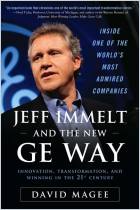
The John Deere Way
Performance that Endures
Recommendation
This sincerely earnest book is a good example of why corporate biography remains, perhaps, the most problematic business-book genre. While the book is well researched, author David Magee apparently found it hard to avoid the trap of laudatory language about current management. To write a book like this, you need corporate help and access. Most employees won’t even talk to an author without a go-ahead from the top. This means that, even without Deere & Company’s roots date to 1836, when a blacksmith named John Deere moved from Vermont to the frontier settlement of Grand Detour, Illinois. Deere set up a shop that could provide stout hayforks, horseshoes and wagon parts. He talked with farmers, who complained that it was very difficult to plow the dense Midwestern turf. Plows made in the Northeast didn’t work in the rich heavy soil. In 1837, Deere decided to devise a plow that would scrape off the topsoil, turn it over and let it glide off the plow. Even without an explicit quid pro quo, corporate biographies tend to become trapped in a sort of literary Stockholm syndrome, dependent on their sources for their own survival. That cautionary flag raised, this book provides a worthwhile portrait of one of America’s stalwart agricultural companies. Deere & Company’s values are as plain and honest as the face of a farmer atop his Deere tractor. Although the book would have been more engrossing if it offered pictures and sharper anecdotes, particularly from times when things didn’t go well, getAbstract.com recommends it to those interested in agriculture, corporate histories or values-driven management.
Summary
About the Author
David Magee has written five books including Ford Tough: Bill Ford and the Battle to Rebuild America’s Automaker.





















Comment on this summary or Начать обсуждение